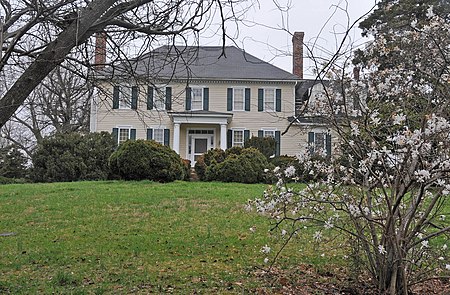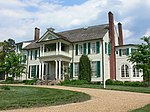Clearview (Falmouth, Virginia)
1796 establishments in VirginiaHouses completed in 1796Houses in Stafford County, VirginiaHouses on the National Register of Historic Places in VirginiaIndividually listed contributing properties to historic districts on the National Register in Virginia ... and 4 more
NRHP infobox with nocatNational Register of Historic Places in Stafford County, VirginiaNorthern Virginia Registered Historic Place stubsStafford County, Virginia geography stubs

Clearview is a historic home located at Falmouth, Stafford County, Virginia. It was built about 1749 and is a two-story, five-bay, frame dwelling. It has a hipped roof, exterior end chimneys, and a distyle Tuscan order front porch. The house measures approximately 42 feet by 26 feet, with an 18 by 26 foot wing added in 1918–1919. The property was used by the Union army as an artillery position during the Battle of Fredericksburg in December, 1862.It was listed on the National Register of Historic Places in 1975. It is located in the Falmouth Historic District.
Excerpt from the Wikipedia article Clearview (Falmouth, Virginia) (License: CC BY-SA 3.0, Authors, Images).Clearview (Falmouth, Virginia)
Forbes Street,
Geographical coordinates (GPS) Address Nearby Places Show on map
Geographical coordinates (GPS)
| Latitude | Longitude |
|---|---|
| N 38.323888888889 ° | E -77.463333333333 ° |
Address
Forbes Street 444
22405
Virginia, United States
Open on Google Maps










